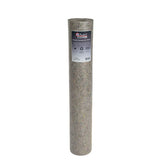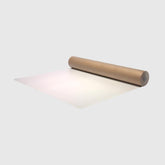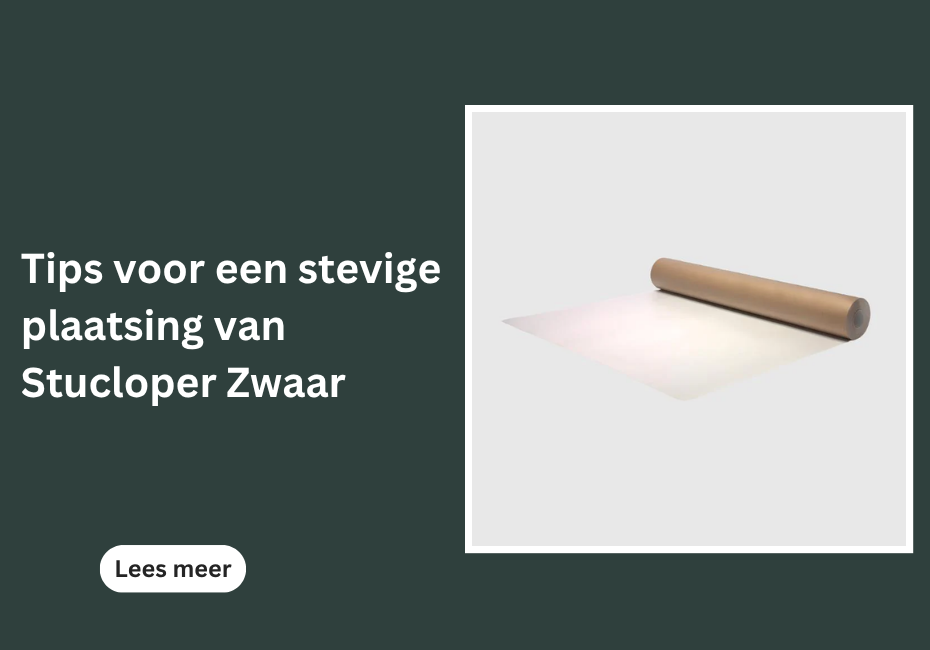Tips for a strong placement of Stucloper Heavy
When protecting floors during renovations, construction work or painting projects, a Heavy Plaster Runner A trusted solution. This robust and reliable temporary flooring keeps expensive floors undamaged, clean, and safe from plaster, paint, and debris. However, to be effective, it must be installed correctly. In this guide, we'll take you step-by-step through the necessary tools, best preparation practices, correct roll-out methods, edge sealing techniques, and common mistakes to avoid.
Tools and Preparation
Before you the Heavy Plaster Runner Before laying down a floor, thorough preparation is crucial. Start by removing all furniture, dust, and debris from the area. A clean, dry floor ensures optimal adhesion and prevents shifting – essential for any temporary floor protection.
Required Tools:
-
Stanley knife or scissors
-
Tape measure
-
Industrial floor tape
-
Broom or vacuum cleaner
-
Protective gloves
Make sure that the Heavy Plaster Runner Store the temporary flooring in a climate-controlled space before installation. Materials can expand or contract due to temperature fluctuations, which can affect the fit. Also check the temporary flooring for visible damage from transport. These small preparatory steps can save time and prevent problems during the project.
How to correctly lay out heavy plaster runner
Heavy Plaster Runner is a high quality temporary floor protection, known for its double-layer lamination, making it durable and moisture-resistant. Proper installation begins with accurately measuring the space. Measure the room dimensions and cut the temporary flooring to size, leaving a few extra inches on each side for sealing the edges.
Step-by-step Rollout:
-
Start at one side of the room and roll the Heavy Plaster Runner slowly, with the brown laminated side facing up.
-
Iron the Heavy Plaster Runner smooth as you roll it out to remove any air bubbles or wrinkles.
-
Use a utility knife to neatly cut the ends along walls or obstacles.
-
Let the covering lie flat for 15–30 minutes before taping the edges. This gives it time to adjust and settle.
This careful rolling out process ensures that the temporary floor covering remains firmly in place, especially in high-traffic areas or during intensive work.
Secure the edges with tape
A well installed Heavy Plaster Runner is only as effective as the protection at the edges.After installation, the next crucial step is to seal the perimeter with industrial floor tape. This prevents dust or liquids from getting underneath and eliminates tripping hazards.
Apply tape around all seams and along walls:
-
Press the tape firmly onto both the temporary covering and the floor surface.
-
Make sure that corners are extra reinforced, especially near doorways and hallways.
-
For extra durability, use a cross-tape method on overlapping sections.
This step not only ensures a firm fixation of the Heavy Plaster Runner, but also extends its lifespan during multi-day projects. Ensure the tape used is compatible with both the flooring material and the laminated surface of the plaster runner to prevent adhesive residue.
Common mistakes to avoid
Even experienced professionals sometimes make simple mistakes when installing a Heavy Plaster RunnerBy avoiding these, you save time, prevent waste, and ensure optimal floor protection.
-
Rushing the preparation:
Skipping cleaning or installing on a wet surface can lead to poor adhesion and pose safety risks. Always prepare the area thoroughly. -
Using low quality tape:
Not all tapes are created equal. Incompatible tape often doesn't adhere well, especially on uneven or dusty surfaces, which reduces the effectiveness of the Heavy Plaster Runner decreases. -
Too little or too much overlap:
When laying multiple strips, ensure an overlap of at least 5 cm, but don't overdo it – too much overlap can cause unevenness. This balance ensures that the temporary flooring remains level and secure. -
Misjudgment of walking routes:
Not taking into account how people move through the space can lead to wear and tear on unprotected areas. Heavy Plaster Runner where it is most needed and provide firm support in all busy walking areas.
These common pitfalls are easily avoided with proper planning and execution, ensuring the temporary floor covering functions as intended.
Conclusion
Using a floor protector such as Heavy Plaster Runner It's one of the most effective ways to maintain the condition of your floors during messy or intensive work. When installed correctly—with the right tools, preparation, application technique, and edge sealing—it provides reliable protection and safety.
Whether you are a professional contractor, painter or DIY enthusiast, it pays to Heavy Plaster Runner Apply carefully. This prevents expensive damage and frustration later.For more information or to view the high-quality Heavy Plaster Runner to purchase, visit the product page of




